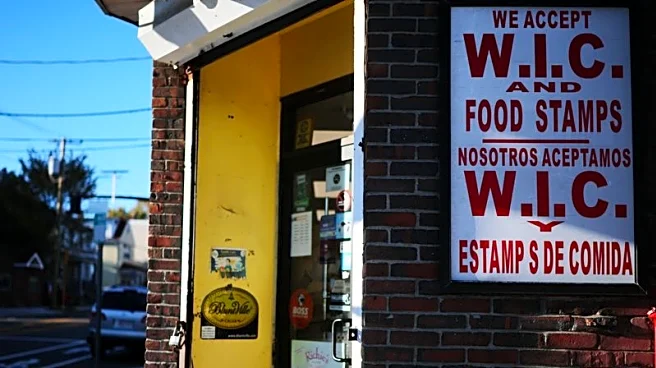What's Happening?
The Trump administration has announced that it will provide partial payments to approximately 42 million SNAP recipients in November. The decision comes as the government shutdown continues, with the administration opting
to use $4.65 billion from an emergency fund to cover 50% of eligible households' current allotments. This move is expected to delay benefits as states work to calculate and distribute the reduced payments. The administration has declined to use additional funds that could have allowed for full SNAP benefits, citing the need to preserve resources for other programs.
Why It's Important?
The partial funding of SNAP benefits during the government shutdown has significant implications for millions of Americans who rely on this assistance for food security. The delay in payments and reduced benefits could lead to increased food insecurity and financial strain for low-income families. This decision also highlights the broader challenges faced by federal safety-net programs during the shutdown, as well as the potential for increased demand on local food banks and community resources. The administration's approach to funding SNAP may also influence public perception and political dynamics surrounding the shutdown.
What's Next?
The timeline for distributing the partial SNAP benefits remains uncertain, with the administration indicating that it could take weeks or even months for the funds to reach recipients. This delay may prompt further legal challenges and increase pressure on Congress to resolve the shutdown. Additionally, state governments and community organizations may need to enhance their support for affected families during this period of uncertainty. The administration's decision not to fully fund SNAP could also lead to increased scrutiny and debate over federal budget priorities and the handling of safety-net programs.












